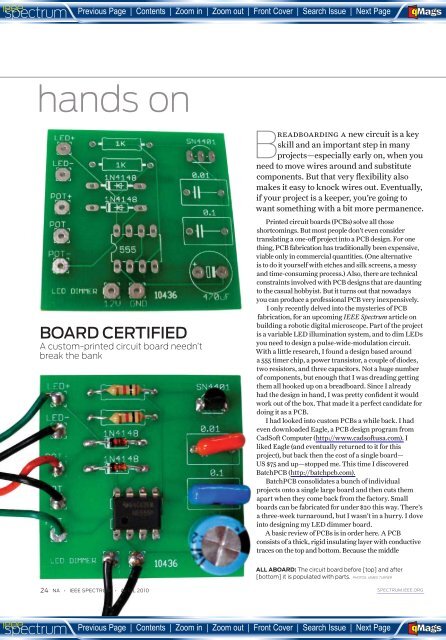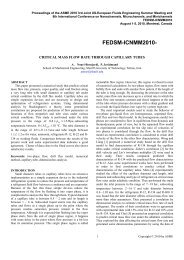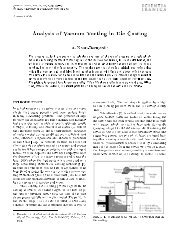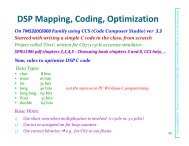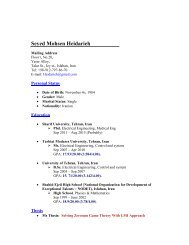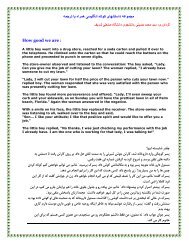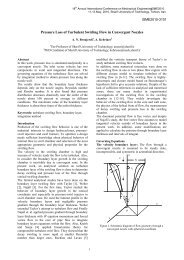You also want an ePaper? Increase the reach of your titles
YUMPU automatically turns print PDFs into web optimized ePapers that Google loves.
A<br />
I Previous Page | Contents | Zoom in | Zoom out | Front Cover | Search Issue | Next Page<br />
S BE<br />
F<br />
hands on<br />
BOARD CERTIFIED<br />
A custom-printed circuit board needn’t<br />
break the bank<br />
24 NA • IEEE SPECTRUM • APRIL 2010<br />
Breadboarding a new circuit is a key<br />
skill and an important step in many<br />
projects—especially early on, when you<br />
need to move wires around and substitute<br />
components. But that very flexibility also<br />
makes it easy to knock wires out. Eventually,<br />
if your project is a keeper, you’re going to<br />
want something with a bit more permanence.<br />
Printed circuit boards (PCBs) solve all those<br />
shortcomings. But most people don’t even consider<br />
translating a one-off project into a PCB design. For one<br />
thing, PCB fabrication has traditionally been expensive,<br />
viable only in commercial quantities. (One alternative<br />
is to do it yourself with etches and silk screens, a messy<br />
and time-consuming process.) Also, there are technical<br />
constraints involved with PCB designs that are daunting<br />
to the casual hobbyist. But it turns out that nowadays<br />
you can produce a professional PCB very inexpensively.<br />
I only recently delved into the mysteries of PCB<br />
fabrication, for an upcoming IEEE Spectrum article on<br />
building a robotic digital microscope. Part of the project<br />
is a variable LED illumination system, and to dim LEDs<br />
you need to design a pulse-wide-modulation circuit.<br />
With a little research, I found a design based around<br />
a 555 timer chip, a power transistor, a couple of diodes,<br />
two resistors, and three capacitors. Not a huge number<br />
of components, but enough that I was dreading getting<br />
them all hooked up on a breadboard. Since I already<br />
had the design in hand, I was pretty confident it would<br />
work out of the box. That made it a perfect candidate for<br />
doing it as a PCB.<br />
I had looked into custom PCBs a while back. I had<br />
even downloaded Eagle, a PCB design program from<br />
CadSoft Computer (http://www.cadsoftusa.com). I<br />
liked Eagle (and eventually returned to it for this<br />
project), but back then the cost of a single board—<br />
US $75 and up—stopped me. This time I discovered<br />
BatchPCB (http://batchpcb.com).<br />
BatchPCB consolidates a bunch of individual<br />
projects onto a single large board and then cuts them<br />
apart when they come back from the factory. Small<br />
boards can be fabricated for under $20 this way. There’s<br />
a three-week turnaround, but I wasn’t in a hurry. I dove<br />
into designing my LED dimmer board.<br />
A basic review of PCBs is in order here. A PCB<br />
consists of a thick, rigid insulating layer with conductive<br />
traces on the top and bottom. Because the middle<br />
ALL ABOARD: The circuit board before [top] and after<br />
[bottom] it is populated with parts. PHOTOS: JAMES TURNER<br />
__________<br />
SPECTRUM.IEEE.ORG<br />
A<br />
I Previous Page | Contents | Zoom in | Zoom out | Front Cover | Search Issue | Next Page<br />
S BE<br />
F<br />
aG<br />
M S<br />
aG<br />
M S


